
For the greatest actor of the 21st century — a title The New York Times has bestowed on Denzel Washington — the chance to continue his Shakespearian journey with Macbeth was met with relish by the 67-year-old, who is now left with only King Lear to play.
But while this was to be no stage play, no excursion to Scotland was planned for a lengthy movie recreation. Instead, a Burbank soundstage was booked and an abstract telling of the treacherous tale was proposed.
InsideHook’s Daniel Egan had it right when he described what director Joel Coen and his team has produced. “With The Tragedy of Macbeth, director Joel Coen and cinematographer Bruno Delbonnel cracked a code that has baffled filmmakers for decades. They capture the immediacy of theater and the intimacy of film, all in a square, black-and-white box. It’s a spiky, fleet-footed version of Shakespeare that communicates directly to viewers.”
READ MORE: How Joel Coen and Bruno Delbonnel Breathed New Life Into “Macbeth,” 400 Years Later (InsideHook)
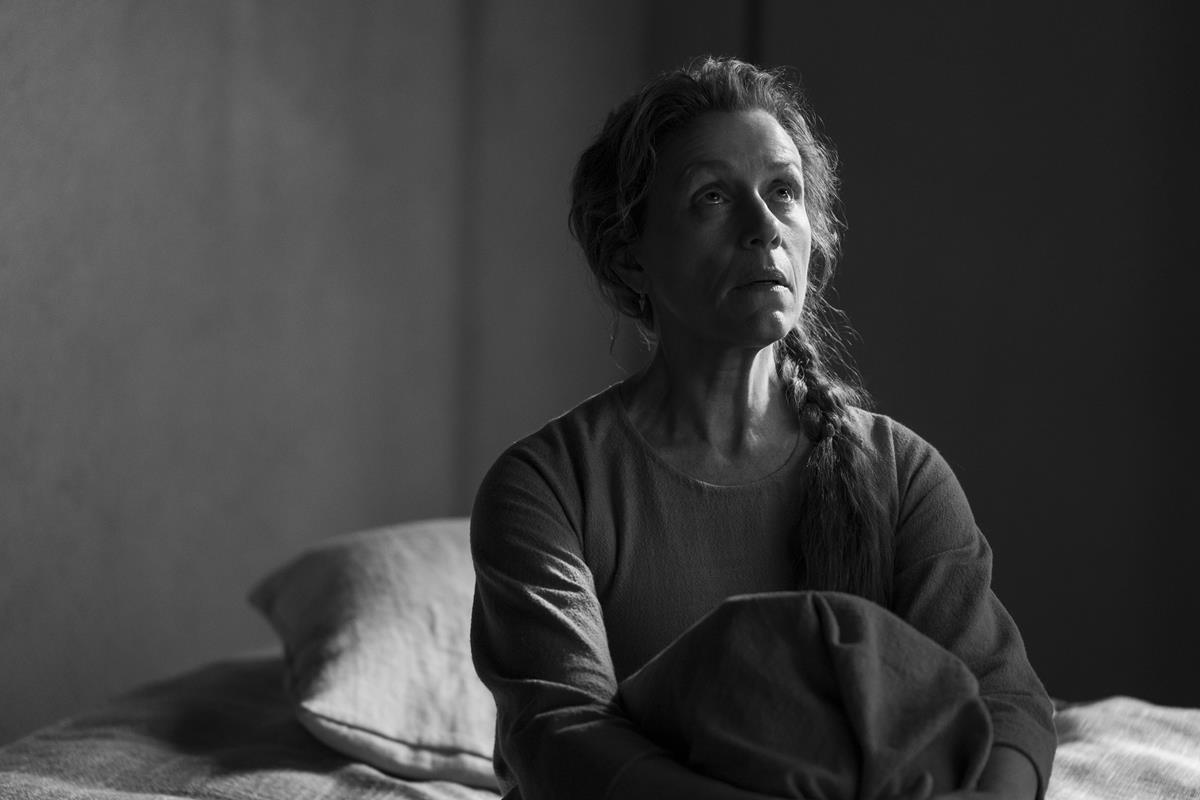
Cohen would never be a willing participant to a pure theatrical retelling of the story, “I wouldn’t know what to do” he said to his wife’s — Frances McDormand — idea a few years before. She went ahead and did it anyway, although returns here to play Lady Macbeth.
“Theater is abstract to begin with,” Joel Coen explains about choosing an approach to the movie. “When you do something in black and white, it’s instantly abstracted, you’ve already abstracted the image. But you’ve abstracted it in a way that is also immediately intelligible to everybody.
“The ambition for myself and for Bruno,” he told American Cinematographer, “without really knowing how to go about doing it — was to preserve the ‘play’-ness of Macbeth, but still make something that is, moment by moment [and] in every way, designed for a camera. That was the starting point, [but] conceptually we were groping around in the darkness, going: ‘Okay, what does that mean? How do we do it?’
“The last thing we were interested in doing was a realistic adaptation of the play: you know, renting a castle in Scotland and people riding around on the heath, that sort of thing….”
READ MORE: The Tragedy of Macbeth: Palace Intrigue (American Cinematographer)
One of the initial questions was how to put the theatrical form inside a film, as Delbonnel explains to IBC365. “We arrived at the idea of a ‘haiku’; to strip everything down to essentials, taking out all ornaments. Then we started to think about applying that idea to the form, the narrative, the set.
“We tried to reduce spaces to their purest simplicity, just like a haiku. We would ask, ‘What is a room?’ It’s four walls, a door, a window, and nothing else. We sought the simplest forms of a staircase, a corridor, a wall. There is almost no furniture in Macbeth’s castle.
“We also wanted to include some of the artifice of the theater, like painted backdrops in exteriors, and having no ceilings in interiors. We wanted this sobriety to avoid the image competing with Shakespeare’s poetry, to leave room for his text.
“But I didn’t want to be ‘nostalgic’ about old black-and-white movies. Quite the opposite: I was looking for the intensity that a very sharp image gives to close-ups. We used large format because I wanted to get a very sharp 4K image.

“The choice of black and white was a way to help to support the visual language,” concludes Delbonnel, who shot in color on ARRI Alexa LF with Cooke S7 lenses and converted to monochrome in post.
READ MORE: Behind The Scenes: The Tragedy of Macbeth (IBC365)
Delbonnel told Joe McGovern at The Wrap that “a play feels more like a movie when it’s shot in black-and-white,” and that he and Coen were guided in the decisions around contrast by the bard himself.
“Following Shakespeare’s lines motivated the decisions we made and helped us to pick the best moments,” he explained. “The sudden move to more contrast would be more powerful.”
Coen and Delbonnel took tips on contrast from German Expressionism as well as Orson Welles’ 1948 Macbeth and Akira Kurosawa’s 1957 adaptation Throne of Blood.
READ MORE: Why ‘The Tragedy of Macbeth’ Cinematographer Grew Superstitious While Making the Black-and-White Drama (The Wrap)
Variety’s Jazz Tangcay says references also came from the austerity of director Carl Theodor Dreyer, Charles Laughton’s influential 1955 noir The Night of the Hunter. Production designer Stefan Dechant collaborated closely with the cinematographer, who started prepping with Coen almost 18 months before shooting began.
Dechant said he favored texture over color, creating shapes and differentiating the environments made up of simple blocks and structures with Gothic arches. Everything was to be geometric without a lot of embellishment. To enhance the arches, Dechant said he darkened them and painted shadow lines, always turning to Delbonnel for final approval. All ornamentations were removed — there were no carpets, no torches and no flashy chandeliers.
Costume designer Mary Zophres followed Dechant’s idea of clean lines with little embellishment in her designs, choosing textured pieces and fabrics. She kept her palette simple.
“In black and white you can use a multitude of colors to create depth,” she said. “But Coen and Delbonnel felt strongly that it had to work in person. Joel didn’t want magentas and purples. He wanted something calming and soothing and not something that was a distraction on set.”
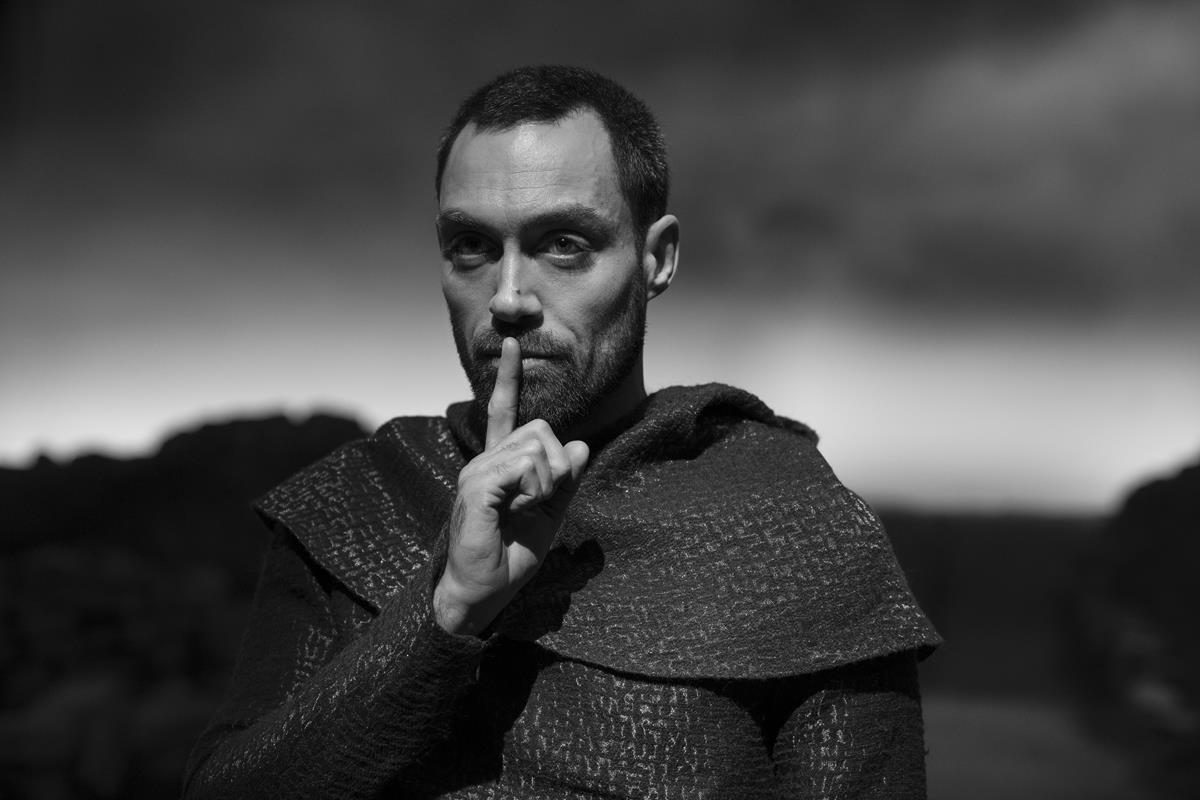
READ MORE: ‘Tragedy of Macbeth’ Artisans on How They Delivered Joel Coen’s Shadowy Study of Ambition (Variety)
Coen found a staunch ally in Delbonnel, according to IndieWire’s Jim Hemphill, as the cinematographer and director worked to cut down the decorative elements as much as possible.
However, the exteriors, recreated on soundstages on the Warner Brothers lot as painted backdrops, are far more sumptuous.
“We thought that the theatricality of a painted sky was more interesting than trying to create a sky later in post, so we embraced old-fashioned technology,” explained Delbonnel. “If you look at The Grapes of Wrath, there’s a beautiful shot at the beginning where Henry Fonda is walking on a road and you know it’s on stage — everything is fake and it’s absolutely gorgeous.”
In The Tragedy of Macbeth, exteriors also benefit from the decision to shoot in the almost square Academy aspect ratio — particularly stunning when viewed on a vertically oriented IMAX screen. That wasn’t the only reason, as Delbonnel revealed: “We wanted to focus on the rhythm of Shakespeare’s language and the power of the lines, and there is nothing better for close-ups and establishing the presence of the actor on screen than the Academy frame.
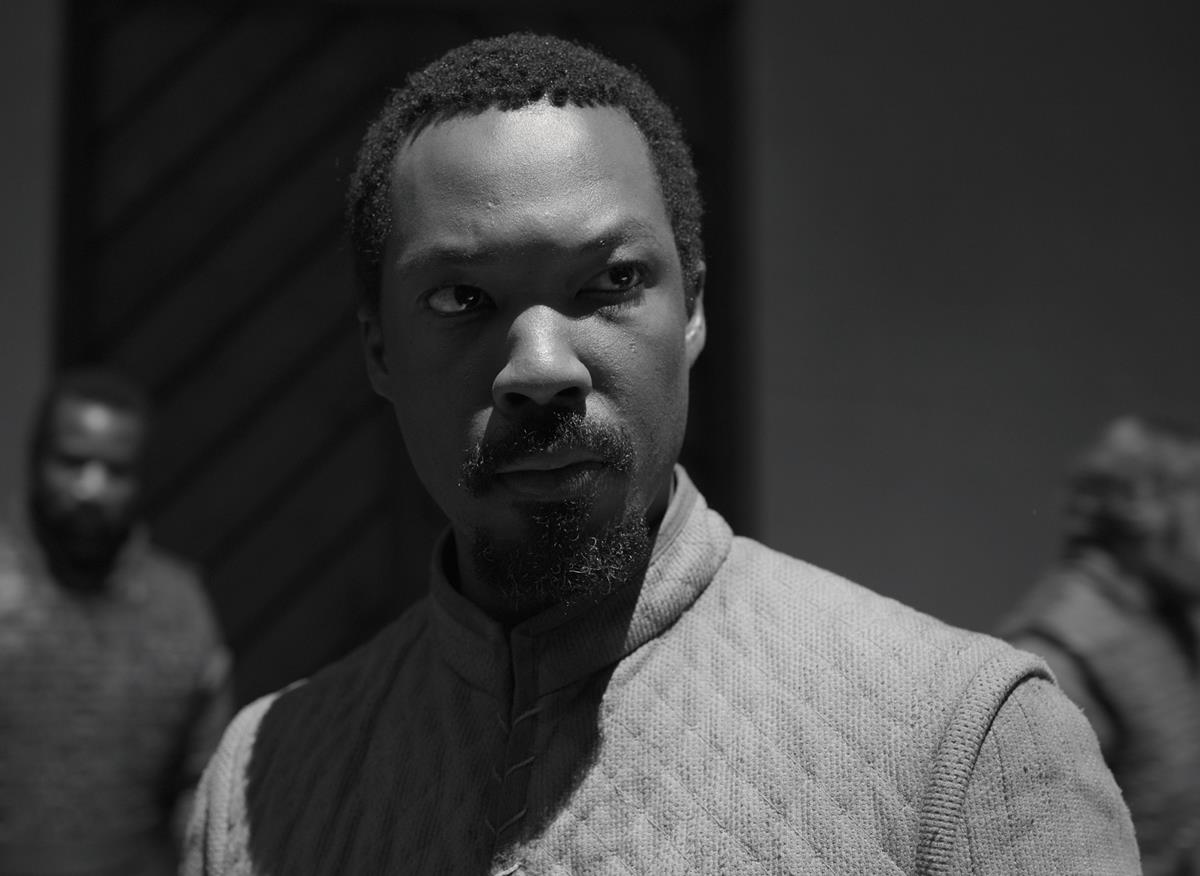
“If you think about the same scene in anamorphic, you have a lot of air on both sides, which for us would have been counterproductive. You’d see the sets, when what we really wanted to see was the face filling the frame as much as possible,” Delbonnel added.
Although meticulously storyboarded and shot-listed, in common with other Coen films, Delbonnel said that he was still able to give the actors freedom of movement thanks to the way he lit the sets. “For example, in what we called the oculus room, where Macbeth talks to the murderers and there’s a big shaft of light in the middle, I basically told Denzel Washington he could feel free to go wherever he wanted, because I could see him anywhere,” Delbonnel recalled. “He could play with the light, and sometimes he’d be in silhouette.”
What did limit freedom however, was the arrival of COVID-19 in the middle of production. Ironically, filming on the “cursed play” had to shut down on Friday the 13th in March of 2020. “When we came back four months later to resume shooting, the restrictions were so severe that I couldn’t change anything,” adds Delbonnel. “I had to go with what I had rigged before COVID.”

READ MORE: ‘The Tragedy of Macbeth’ Cinematographer Bruno Delbonnel Turned Shakespeare Into a Visual Haiku (IndieWire)
Deadline’s Matt Grobar says the French cinematographer is really interested in formal ideas and conceptual ideas. “More than light, in some ways,” said Delbonnel. “So, if you have a director saying, ‘How can we think about theatricality and avoid being a play, but still being Shakespeare?’, it’s a conceptual thing I’m ready to think about.”
The DP, currently prepping a film he’ll shoot for Alfonso Cuarón, looked to put his own stamp on the classic story. “We didn’t compete with Kurosawa and Polanski, or Orson Welles. It’s not a competition,” he said.
READ MORE: Bruno Delbonnel On ‘The Tragedy Of Macbeth’s Cinematography (Deadline)
But what of the 400-year-old language itself? Even though this is a slight adaptation of the original words, the rhythm of the iambic pentameter remains. How would Cohen appease the oncoming Shakespearean rebuttals?
During a Q&A for the DGA in New York, moderated by director Noah Baumbach, Coen accepted that some modern audiences might be distracted by some of the archaic remnants. “In one respect it is a foreign language,” he agreed. “But if you just listen to the music of, it you don’t need to understand everything and it is accessible to everyone.
“I think this succeeds to a greater or lesser extent,” he continued. “The text is edited so this is only about maybe 80% of the actual words in the play. What Shakespeare does in lots of scenes is he makes a dramatic point and then he elaborates.”
Coen says it’s this elaboration that sometimes get lost in the language, so he has to some degree stripped it out in his version. “It just moves along and that hopefully gives the play a sort of propulsion that it doesn’t always have on stage,” he added.
READ MORE: ‘Director Joel Coen discusses The Tragedy of Macbeth’ (Directors Guild of America)
His main concern was boiling down the text without reducing its identity. “I wanted to do Shakespeare for people who don’t want to see Shakespeare, or who might even be intimidated by it,” he told The Guardian’s Peter Bradshaw. “But I wanted to preserve the power of the text, because that’s the melody of the thing — and I wanted to figure out how to get the rhythm that goes relentlessly through the whole thing like a murder movie.”
READ MORE: ‘A post-menopausal Macbeth’: Joel Coen on tackling Shakespeare with Frances McDormand (The Guardian)
The Tragedy of Macbeth is the first major motion picture to be directed by one of the Coen brothers without the other’s involvement.
Adam Bentz on ScreenRant reports a source close to the Coen brothers saying that Ethan will no longer be making movies in order to focus on his work as a playwright.
READ MORE: Joel Coen Opens Up About Directing Without Brother Ethan After 35+ Years (ScreenRant)
Coen admitted to Deadline’s Mike Fleming, Jr. that he missed his sibling many times on this production, but added, “doing Shakespeare is probably something that Ethan wouldn’t have been as interested in doing.”
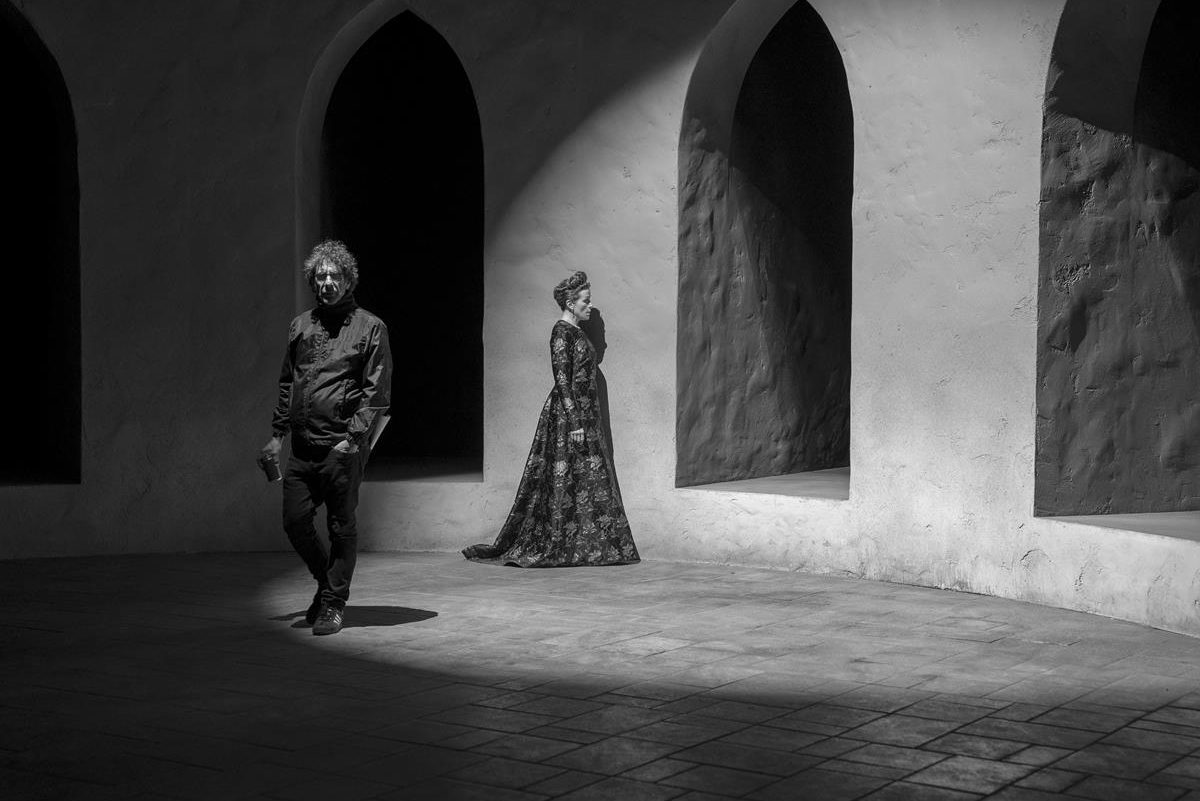
However Coen feels that “the Scottish play” prefigures so many tropes of American popular entertainment, dramatic and literary entertainment, “all things which are very sort of close to my heart and my history in terms of things that I’ve been making over the last 35-40 years with my brother can be found in this play.”
With Denzel Washington at age 66 during production, a notable difference in this adaptation was the ages of the titular character and his infamous spouse, played by Frances McDormand.
Interviewed alongside her husband, McDormand says the choice of Washington as Macbeth “couldn’t have been more perfect.”
“There aren’t many actors, contemporaries of my age, that could handle the character but also who consistently does theater the way Denzel does,” she added.
Coen, “not a Shakespearean scholar in any respect,” admits that Macbeth is usually cast younger, but “it was very much part of the conception from the beginning.”
In fact, he saw age giving the play an interesting dimension. “Fran and I were older at that point, and the way to think about it was in terms of your own life and your own experience.
“Time is all over this play; the obsession with the passage of time, Macbeth’s obsession with the fact that he may be king but his heirs won’t be kings,” he added. “The obsession with the future is very much a part of the play, and when you start to think about all those things which Shakespeare weaves into the play about time, and then you add the dimension of the fact that the couple is not a young couple but an older couple, it takes on different colors.”
McDormand said a certain line in the play “jumped out” in terms of Lady Macbeth being post-menopausal. “The fact that they cannot produce children and that they hadn’t successfully kept a child alive seemed to be a real part of the depth of their sorrow,” she said. “My idea was that Lady Macbeth’s job was to produce an heir. That’s her political job, that would be her job, as queen. And because she can’t get him that, she can help get him the crown. She can at least give him the crown. Also, it’s going to keep her alive.”
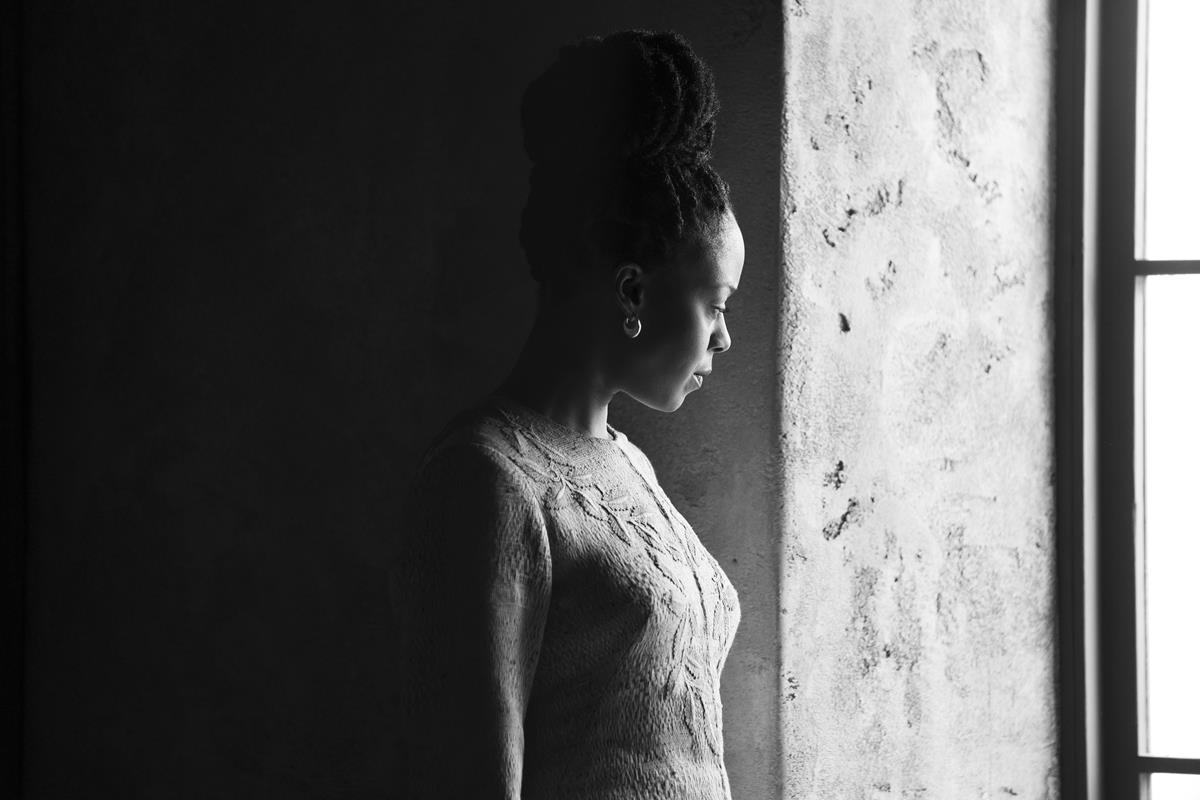
Still on the subject of time, the film adapts a short play into a shorter film. As well as revealing the shoot lasted barely over a month, Coen said that he abridged the story not just for concision but also for pace.
“What Shakespeare does a lot is he constructs a scene that has a dramatic point,” he explained. “If you’re making a thriller, you want it to march along at a really terrific pace. To me that was a way of involving more and more people in the story who don’t normally go and see Shakespeare.”
Another difference is the translation of Macbeth’s soliloquies into conversation. Traditionally in movie adaptations the soliloquy is presented as a voice-over.
“I wanted to adapt it into the context of the scene,” Coen explained. “Most of Macbeth’s soliloquies, not all of them, are about information that actually one other character in the play knows about, and it doesn’t matter if it’s shared with that person, and that’s Lady Macbeth. So, some of those soliloquies got wrapped into scenes with Lady Macbeth where he’s actually speaking those things to her.”
READ MORE: Frances McDormand & Joel Coen Answer All Questions On Eve Of New York Film Festival Opener ‘The Tragedy Of Macbeth’ (Deadline)
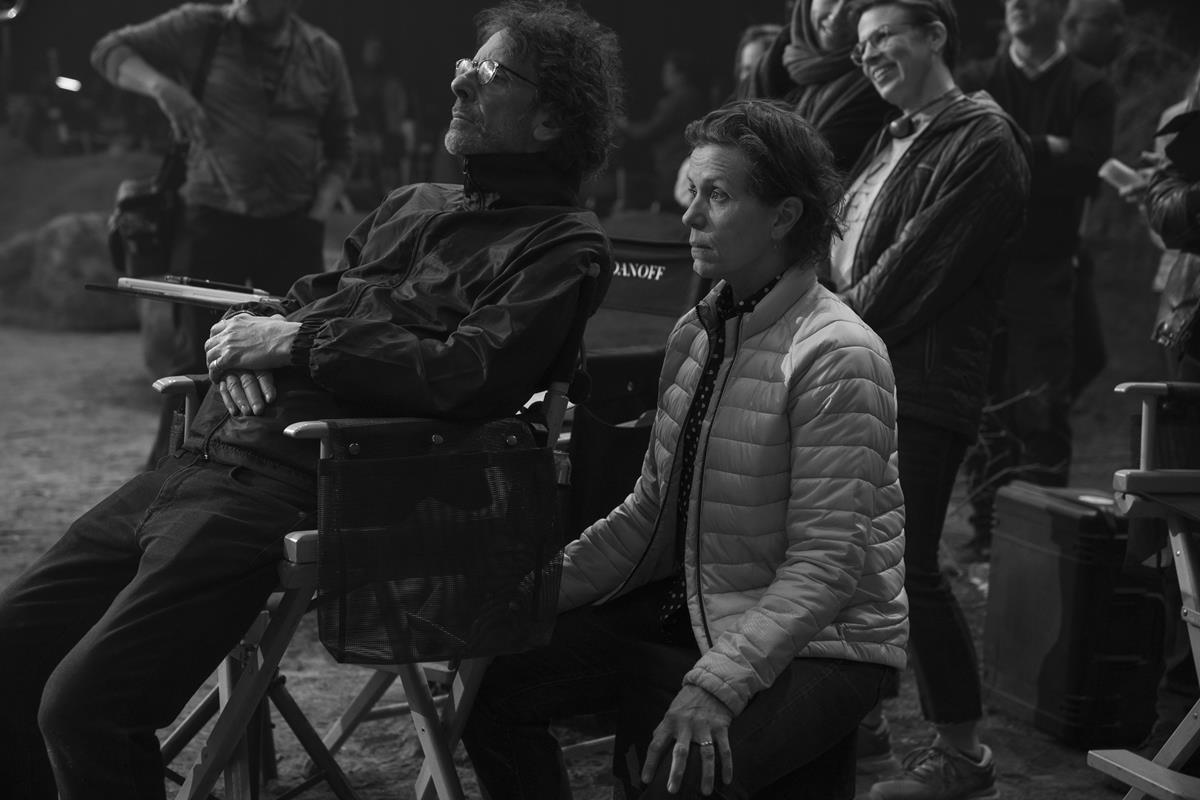
At 105 minutes, this is a shorter Macbeth movie than most, But NPR’s Justin Chang feels the story of Macbeth’s murderous rise to power is told with “ruthless concentration.”
As well as praising Coen and Delbonnel’s use of monochrome and the Academy Framing, Chang highlights Carter Burwell’s score which “sets an ominous mood, complemented by what sounds like an executioner’s drumbeats.”
Also worth noting is English stage actor Kathryn Hunter, who plays all three witches, as well as the staging Coen uses for the ethereal triumvirate. “Rather than showing us the witches stirring their pot, he positions them up in the rafters like birds, looming over Macbeth, while the floor beneath his feet becomes a bubbling cauldron.”
Brendan Gleeson’s Duncan has “a genuinely kingly air,” Corey Hawkins offers “youthful vitality” in the role of Macduff, while Bertie Carvel brings “the requisite gravity to the role of Banquo.” As for Coen, “there’s no denying he has the right temperament for this doomiest of Shakespeare plays.”
READ MORE: This ‘Macbeth’ adaptation distills Shakespeare’s tragedy to its furious essence (NPR)
Newcomers like Moses Ingram, the Queen’s Gambit star who made her feature debut in The Tragedy of Macbeth as Lady Macduff, said she felt as welcome on the set as its veteran leads — and found Coen to be patient and compassionate.
Ingram told Dave Itzkoff of The New York Times that that sometimes after a take, she would “run to the monitor and be freaked out by what I saw.” Coen counselled her that with experience she would be able to look at the monitor and see what she needed to fix: “This is your first feature, so wait on it, and feel it out and learn.”
At the other end of the acting scale, Denzel Washington said he was “eager for the role, as he’d never worked with either Coen but considered himself a fan of their “dangerous’ films.”
Washington said he appreciated Coen’s directing style, beginning at rehearsals in early 2020, “that there be “no stick-up-the-butt Shakespearean acting” in the film,” but he noted with some humor that the director did concentrate on one aspect of his delivery — namely pronouncing his Rs properly.
READ MORE: How Joel Coen Made ‘The Tragedy of Macbeth’ (New York Times (Paywall)
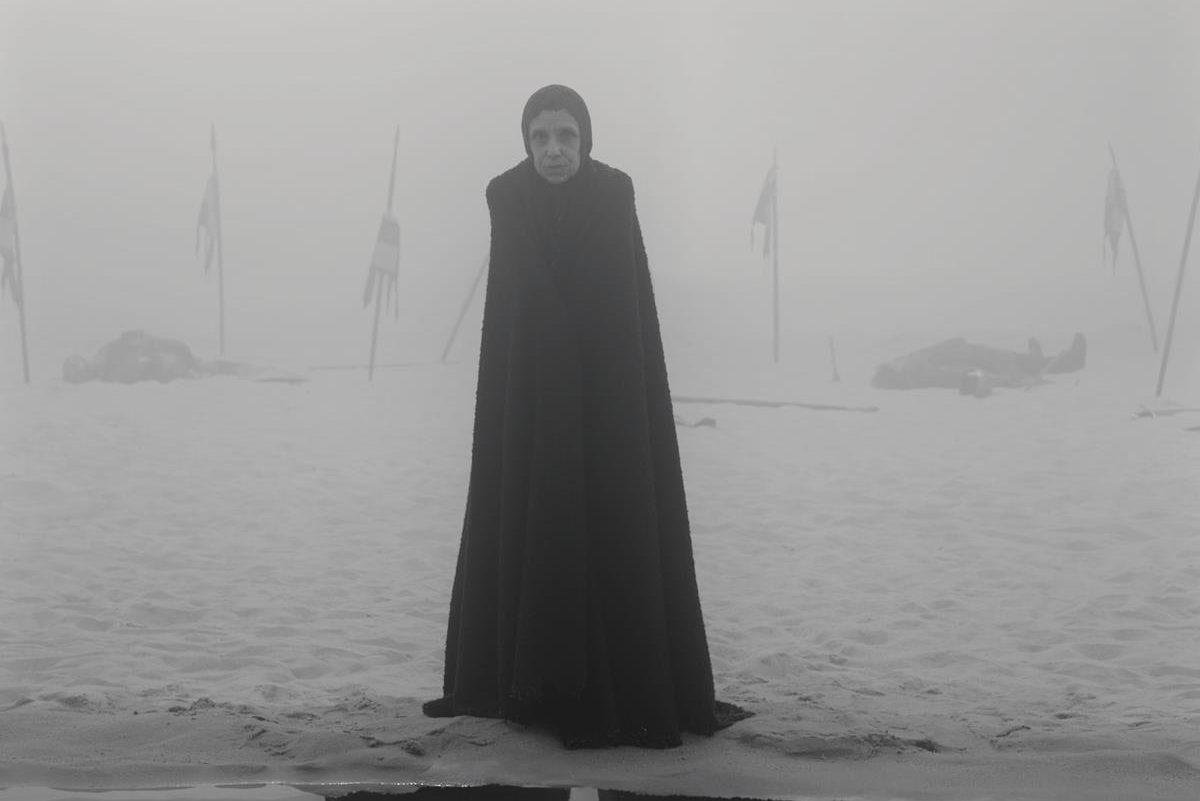
The Tragedy of Macbeth has had a limited theatrical run, but an Apple and A24 deal gives it a much longer stay on Apple’s streaming service, something Cohen has comes to terms with and is now sanguine about, as he told Ryan Lattanzio at IndieWire.
“As a filmmaker you want your audience to see your film on the best, biggest screen possible. The worst nightmare as a filmmaker is that someone watched your film on an airplane,” Coen said.
“When I first got into the movie business — it’s been almost 40 years ago — the reason I was able to make movies with Ethan [Coen], the reason we were able to have a career is because the studios at that point had an ancillary market that was a backstop for more risky films, which were VHS cassettes or all these home video markets, which is essentially television.
“So the fact that those markets are sort of responsible for my career, I’m not going to bust on them now because they’ve become very successful and are overtaking the market. It’s the reason I’m able to do this stuff,” said Coen.
“I have mixed feelings about [streaming] obviously. You want people to see it on a big screen. But the other part of it is that’s been part of the history of our movies since the very beginning. That’s the best answer I can give you.”
READ MORE: Joel Coen: Streaming Is Reason ‘Risky’ Films Like ‘Tragedy of Macbeth’ Can Still Exist (IndieWire)
LEARN MORE ABOUT ATTENDING THE 2022 NAB SHOW



